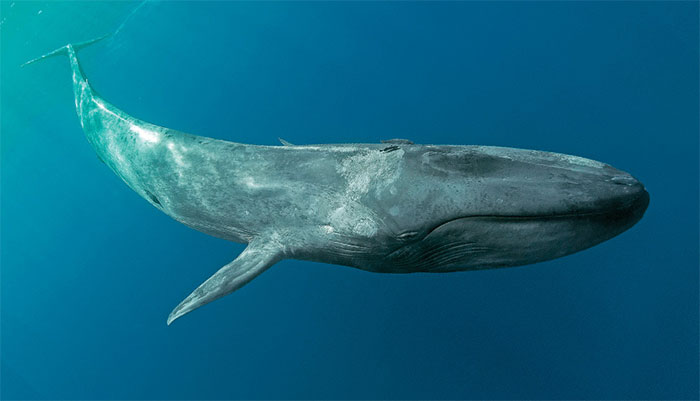New Research Reveals How Blue Whales Quickly Detect Wind Direction to Locate Abundant Food Sources.
A study by scientists from the Monterey Bay Aquarium Research Institute (MBARI) and collaborators has shed light on the mysterious movements of blue whales.
The research team utilized directional hydrophones at MBARI’s underwater observatory, integrating them with advanced technologies to understand how these giant ocean creatures search for food.

Blue whales are elusive creatures.
The equipment recorded the sounds made by blue whale pods each time they went foraging. The results indicated that blue whales move in response to changes in wind.
Along the central coast of California, blue whales appear in the spring and summer. From March to July, seasonal winds blow, gently stirring the surface waters. This cooler water leads to an increase in phytoplankton, which is richer in nutrients.
This marks the beginning of a diverse food web in Monterey Bay, ranging from small crustaceans to large whales.
John Ryan, a marine biologist at MBARI and the lead author of the study, stated that this new technology opens doors to research on complex ecosystems where large animals like blue whales are on the brink of extinction.
Intelligent blue whales can detect when the wind shifts, allowing them to adapt their habitats. These giant ocean creatures identify areas with abundant and rich food sources.
For an animal weighing up to 150 tons, finding areas with dense food supply is vital for survival. Blue whales are the largest animals on Earth. Currently, scientists still have many unanswered questions regarding the biological and ecological characteristics of blue whales.
These gentle giants often gather seasonally in Monterey Bay to feed on small shrimp-like crustaceans.
Blue whales are elusive creatures. They can cover large distances underwater very quickly, making accurate tracking extremely challenging.
In 2015, researchers at MBARI installed an underwater hydrophone to record sounds in the ocean. This audio database provides crucial insights into many secrets of the deep sea, from the migration and foraging behaviors of blue whales to the impacts of noise from human activities.


















































